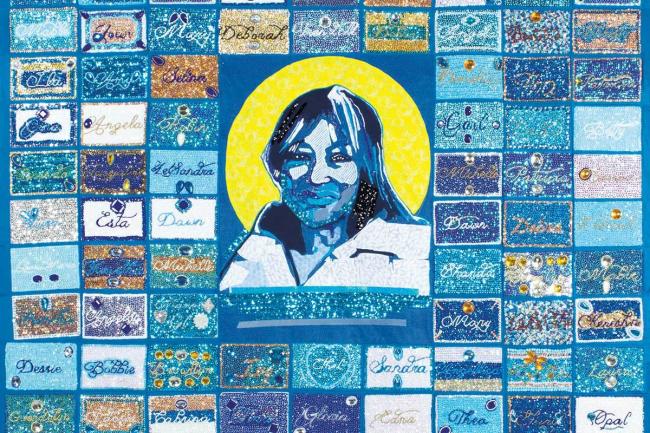Per(Sister): Incarcerated Women of Louisiana is a groundbreaking show with one straightforward goal: to make the invisible visible.
The statistics surrounding incarceration in Louisiana (and America) are stark but known; the state holds the second-highest incarceration rate in the nation, and up until 2018 Louisiana was known as the “Prison Capital of the World.” What’s just as stark, but little known, are the numbers concerning incarcerated women. According to the Prison Policy Initiative, within the past 40 years women’s state prison populations have grown 834 percent and Louisiana holds the 19th-highest rate of incarcerated women in the world. The vast majority (82 percent) of women are in jail for nonviolent offenses, and, of that population, 86 percent have experienced sexual violence, nearly 80 percent are mothers, and 60 percent were unemployed at the time of their encounter with the justice system. Per(Sister) goes further than highlighting data, though; it puts names, faces, voices and stories to these statistics.
Created in partnership with two formerly incarcerated women, Syrita Steib-Martin and Dolfinette Martin, and with the aid of such organizations as Operation Restoration and Women With a Vision, the exhibition showcases the intimate experiences of 30 formerly incarcerated women as translated into brand-new works of art and music created by more than 30 artists from across America (including New Orleans’ own Lynn Drury, MaPo Kinnord, Lee Diegaard, L. Kasimu Harris, Devin Reynolds, Carl Joe Williams, Keith Duncan and Cherice Harrison-Nelson). Stories of loss, hope, despair, survival, triumph and persistence are shared in a variety of mediums from voice recordings and photographs to sculptures, paintings, illustrations, performances and even a custom Mardi Gras Indian suit.
“Using art as a vehicle of communicating these stories, the museum is providing the Tulane community an opportunity to educate themselves on one of the most critical issues currently facing our state,” said museum director Monica Ramirez-Montagut. “We worked closely with the community to identify the four main themes of the exhibition — the root causes of female incarceration, the impact of incarcerating mothers, the physical and behavioral toll of incarceration, and the challenges and opportunities for reentry — and have provided a multitude of access points to learn about the issues facing the PerSisters.”
A companion digital component of the exhibition is a website where interviews, images, videos and more from the show’s run are archived and upcoming events are publicized. It can be found at persister.info.
Per(Sister) is on display through July 6.































































